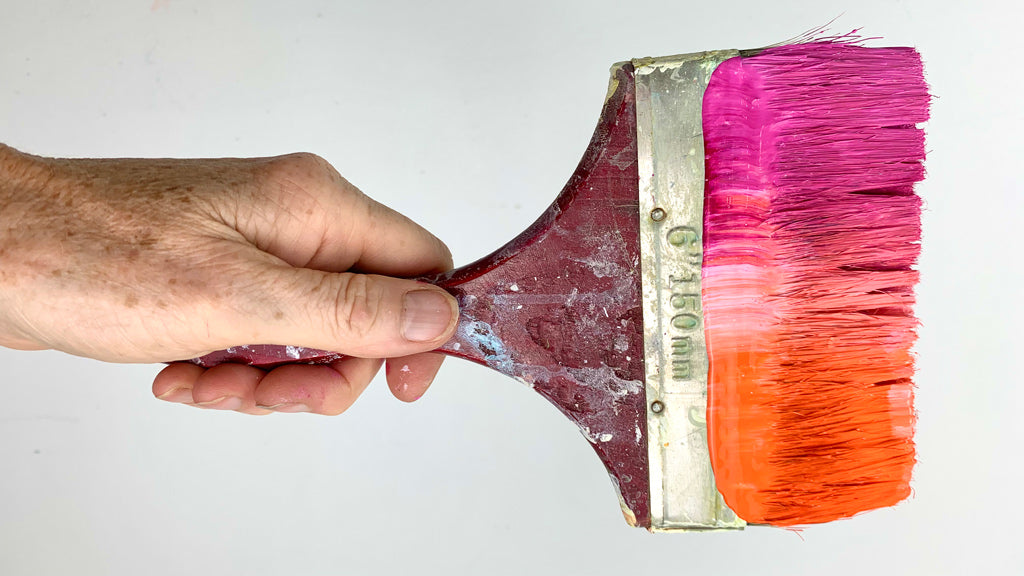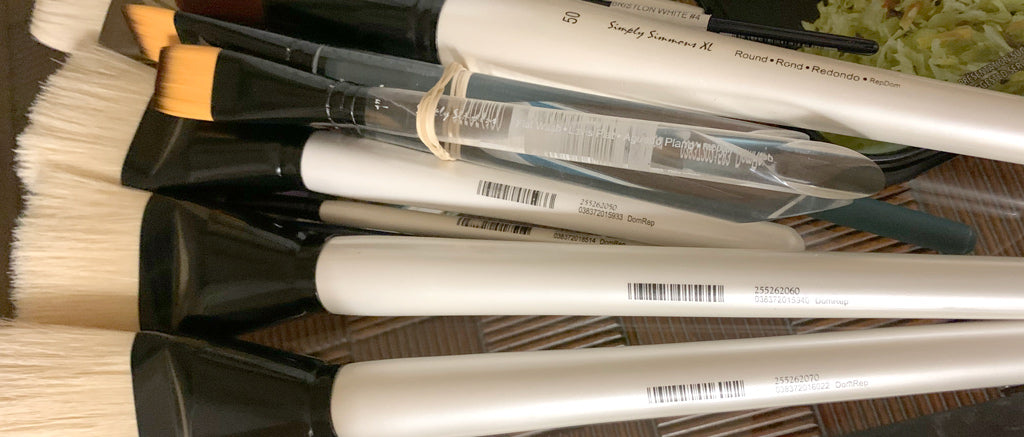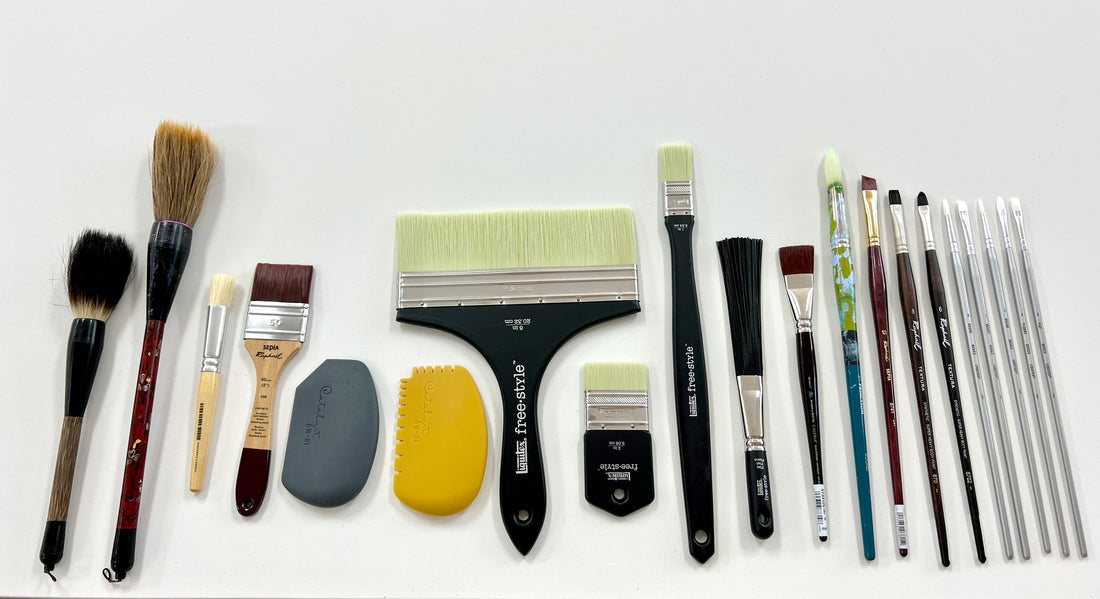As an artist, stepping into a store filled with rows upon rows of paintbrushes can feel overwhelming. Each brush seems to whisper promises of different strokes, textures, and possibilities. With so many options available, how do you choose the right one for your artistic endeavors? Let’s explore the world of paintbrushes, deciphering the nuances between long and short handles, natural and synthetic bristles, and matching brushes to specific types of paints.
Here is your ultimate paintbrush guide, below.

Handle length
Choosing between long and short handles is essential as it impacts your painting technique and comfort level. Long-handled brushes offer greater reach and control, making them ideal for artists who prefer to work at an easel or from a distance. With a comfortable grip, they are well-suited for techniques that require precision and detail work. On the other hand, short-handled brushes are more maneuverable and versatile. They are convenient for close work or painting on smaller surfaces, providing ease of movement and control, especially for sketching and painting on the go.
Long Handles
- Greater reach and control
- Ideal for working at an easel or from a distance
- Comfortable grip for precision and detail work
Short Handles
- More maneuverable and versatile
- Suitable for close work or smaller surfaces
- Convenient for sketching and painting on the go
Bristle material

Understanding the differences between natural and synthetic bristles is crucial in selecting the right brush for your painting needs. Natural bristles, typically made from animal hair such as hog, sable, or squirrel, offer excellent paint absorption and release. They are prized for their softness, flexibility, and ability to hold a generous amount of paint, making them ideal for oil and acrylic painting techniques. On the other hand, synthetic bristles, composed of nylon or polyester, are durable and resilient. They are suitable for water-based paints like acrylics and watercolors, offering precise control and easy cleanup. Additionally, synthetic brushes are a cost-effective and ethical option for vegan or environmentally conscious artists.
Natural Bristles
- Made from animal hair (hog, sable, squirrel)
- Excellent paint absorption and release
- Soft, flexible, and holds paint well
- Ideal for oil and acrylic painting techniques
Synthetic Bristles
- Composed of nylon or polyester
- Durable and resilient
- Suitable for water-based paints like acrylics and watercolors
- Cost-effective and ethical option for vegan or environmentally conscious artists
Brush shape and size

The shape and size of a brush determine its versatility and suitability for different painting techniques. Flat brushes, for example, are ideal for covering large areas and creating clean edges, making them versatile for broad strokes and expressive gestures. Round brushes, on the other hand, are suitable for outlining, detailing, and filling in small areas, offering precision and control. Filbert brushes combine the benefits of both flat and round brushes, making them ideal for blending and softening edges, catering to various painting styles and preferences.
Flat Brushes
- Ideal for covering large areas and creating clean edges
- Versatile for broad strokes and expressive gestures
Round Brushes
- Suitable for outlining, detailing, and filling in small areas
- Versatile tool for various painting techniques
Filbert Brushes
- Combine benefits of flat and round brushes
- Ideal for blending and softening edges
- Versatile for different painting styles
Choosing the right brush for your paint

Matching your brush to the type of paint you're using is essential for achieving optimal results in your artwork. Acrylic paints, known for their quick drying time and versatility, pair well with synthetic brushes due to their durability and easy cleanup. Oil paints, with their rich texture and slow drying time, benefit from natural bristle brushes that can handle the heavier consistency and blend colors seamlessly. Watercolor paints require brushes with soft, absorbent bristles that can hold ample water without losing their shape, with synthetic brushes offering the flexibility and precision needed for intricate washes and delicate details.
Acrylic Paints
- Pair well with synthetic brushes
- Durable and easy to clean
- Suitable for quick-drying and versatile acrylic paints
Oil Paints
- Benefit from natural bristle brushes
- Handle heavier consistency and blend colors seamlessly
- Ideal for slow drying oil paints with rich texture
Watercolor Paints
- Require soft, absorbent brushes
- Synthetic brushes designed for watercolors offer flexibility and precision
- Ideal for intricate washes and delicate details


2 comments
Excellent information once again!
An informative post! Thank you